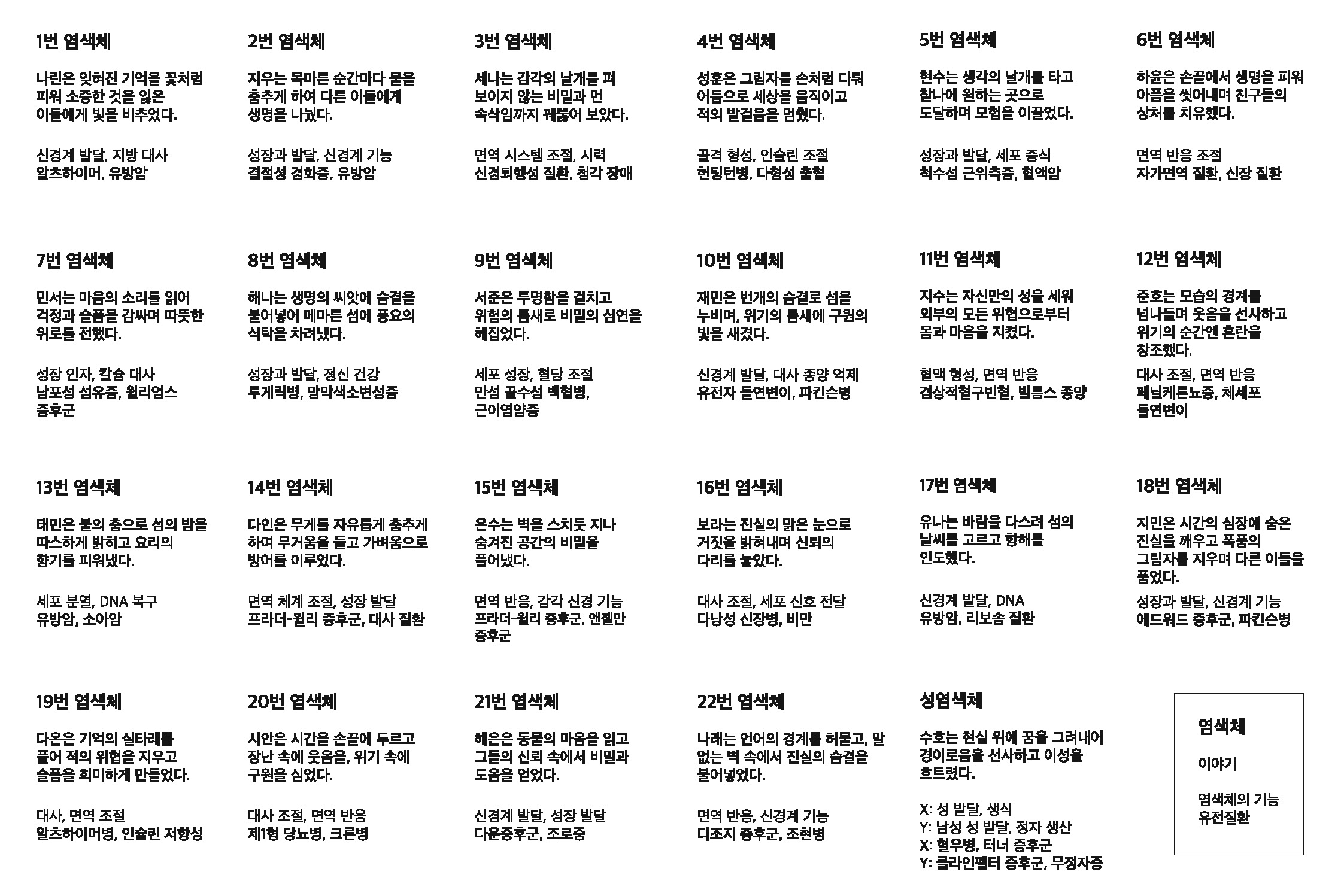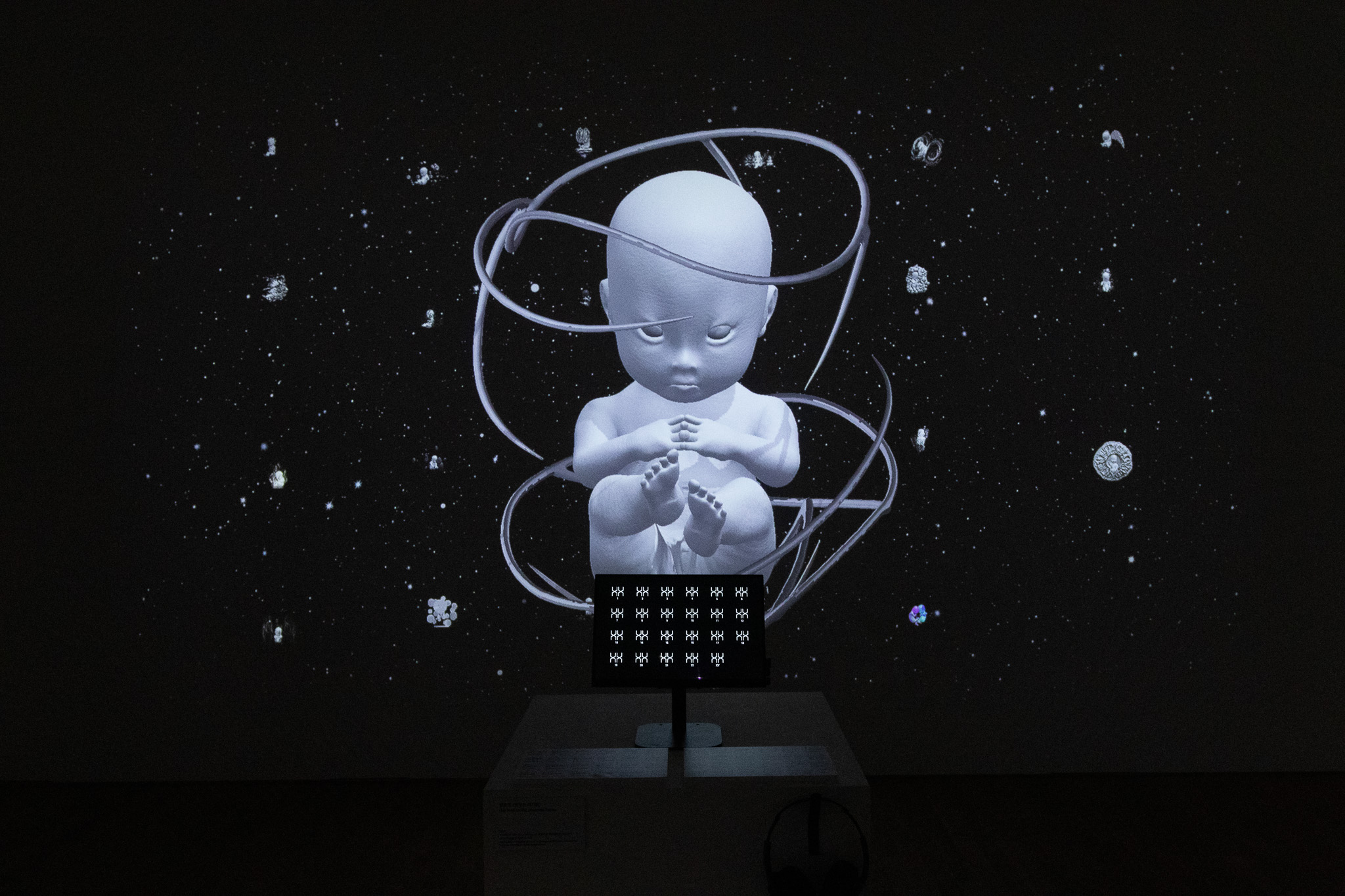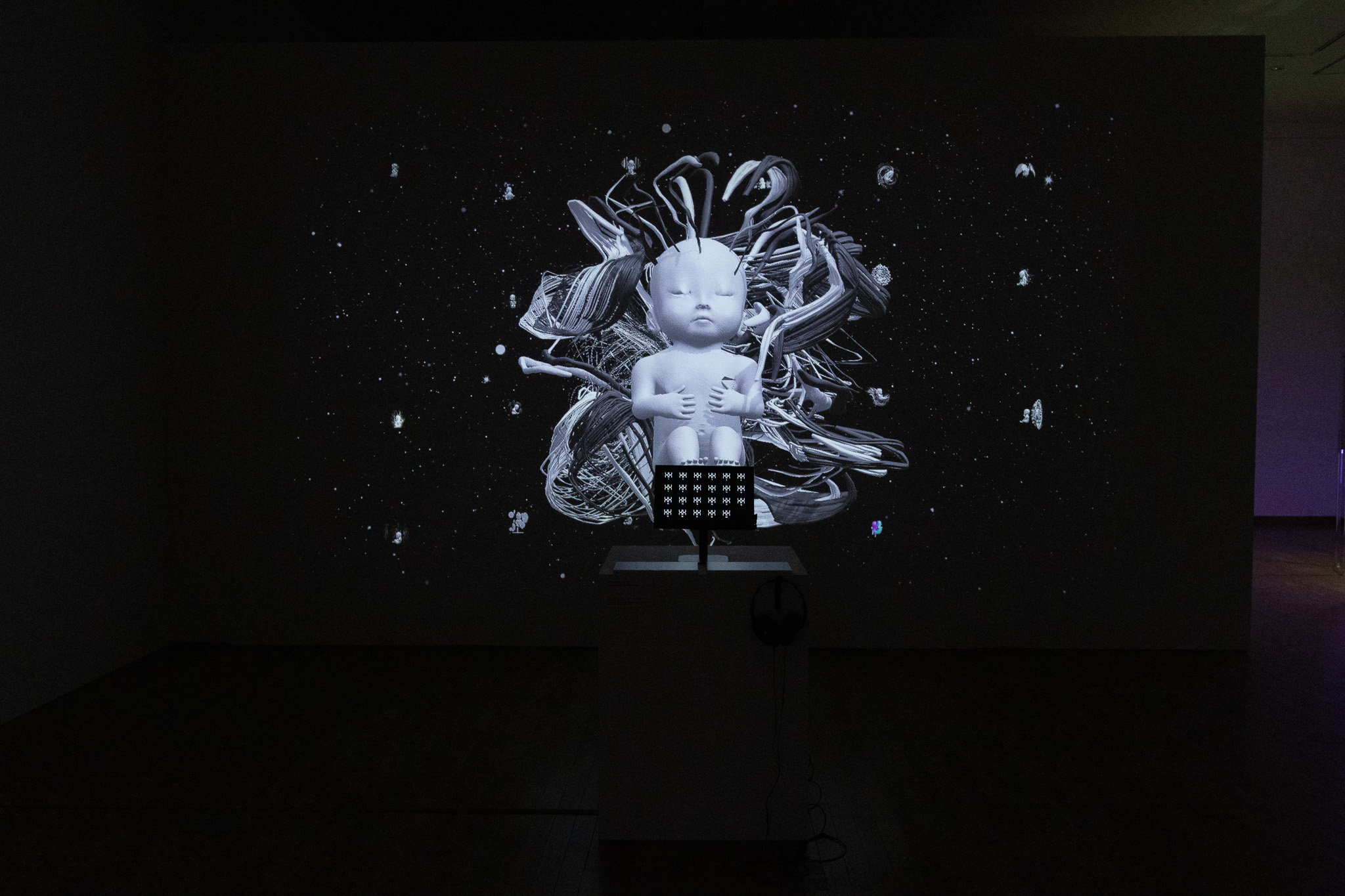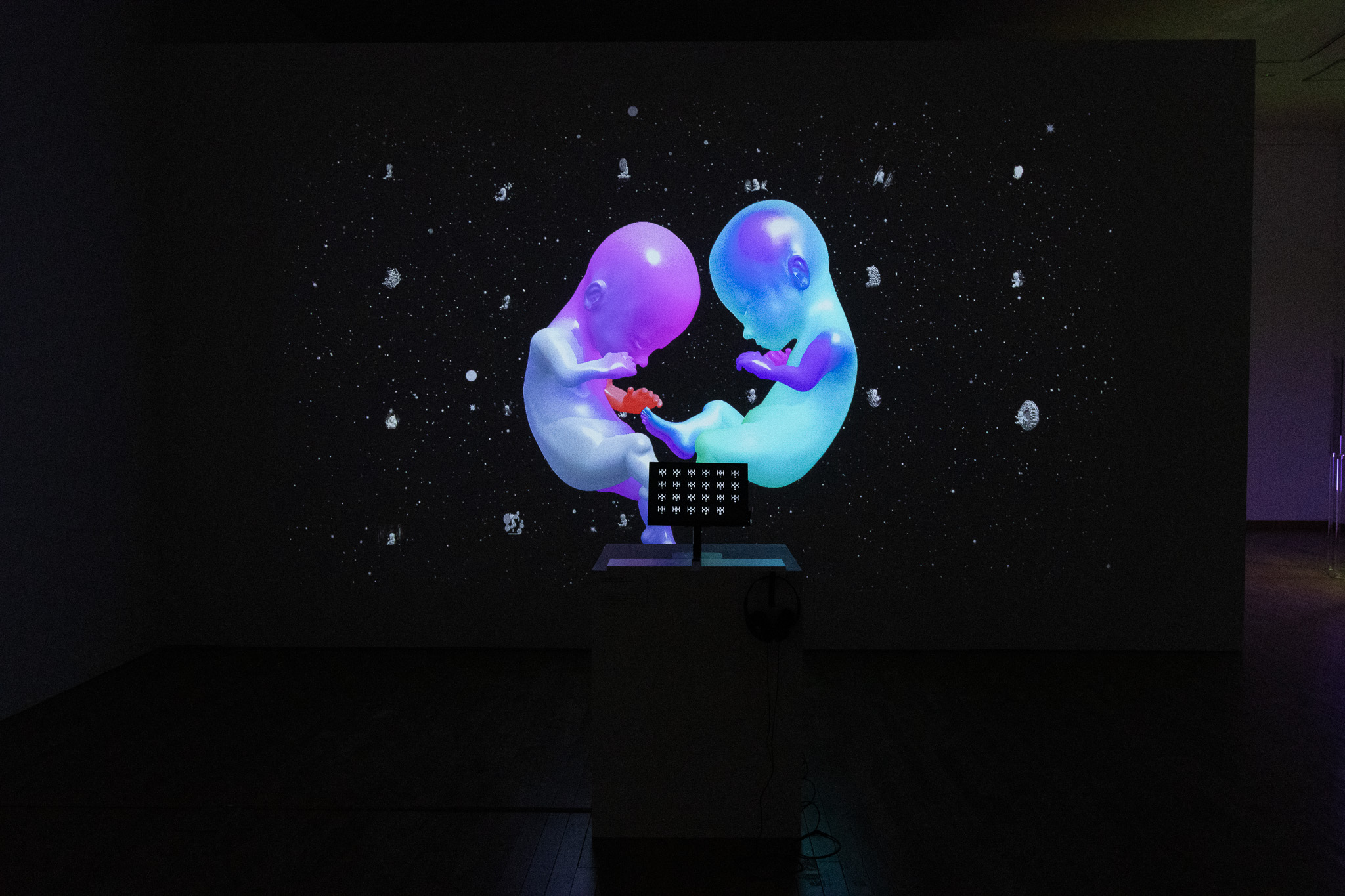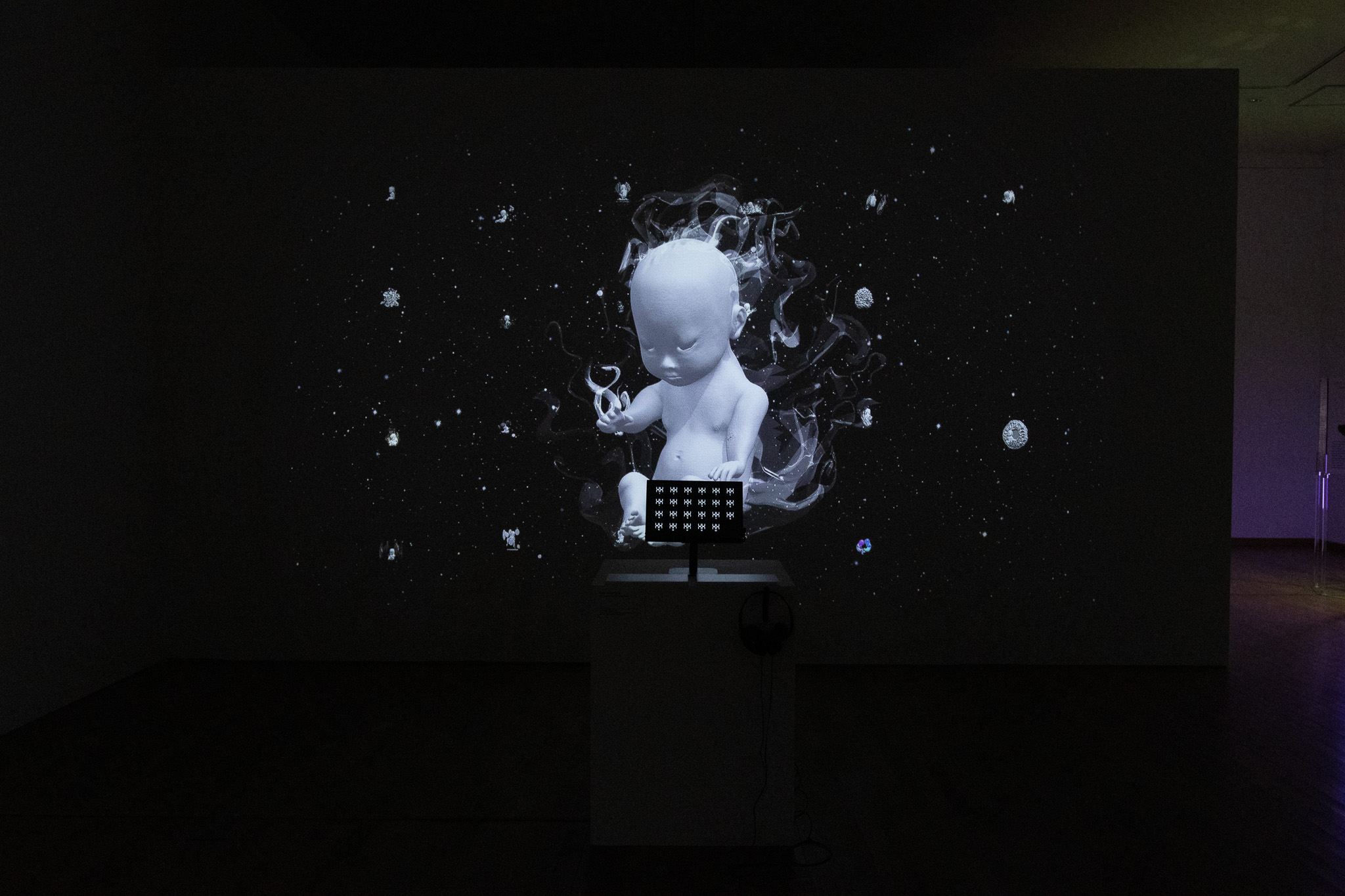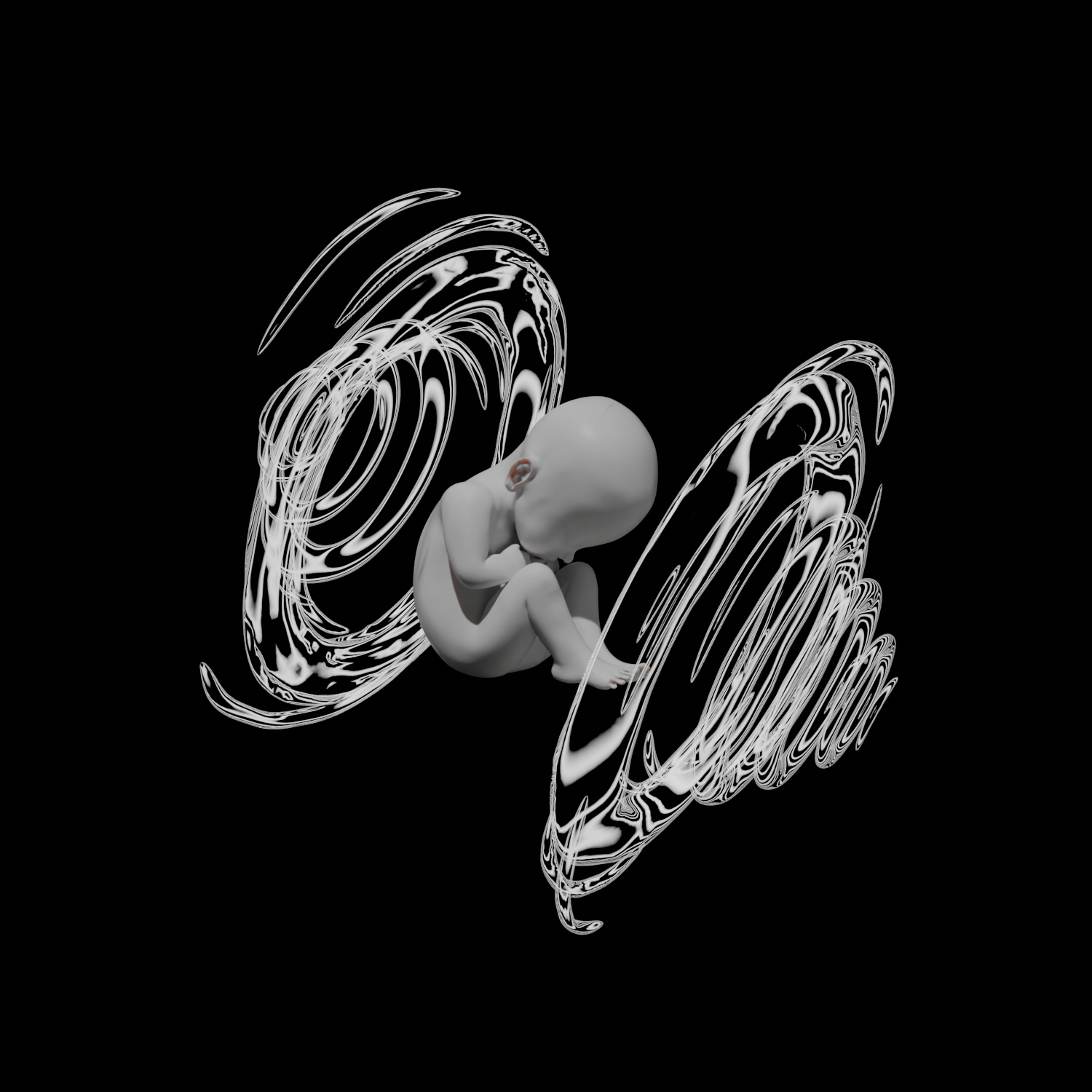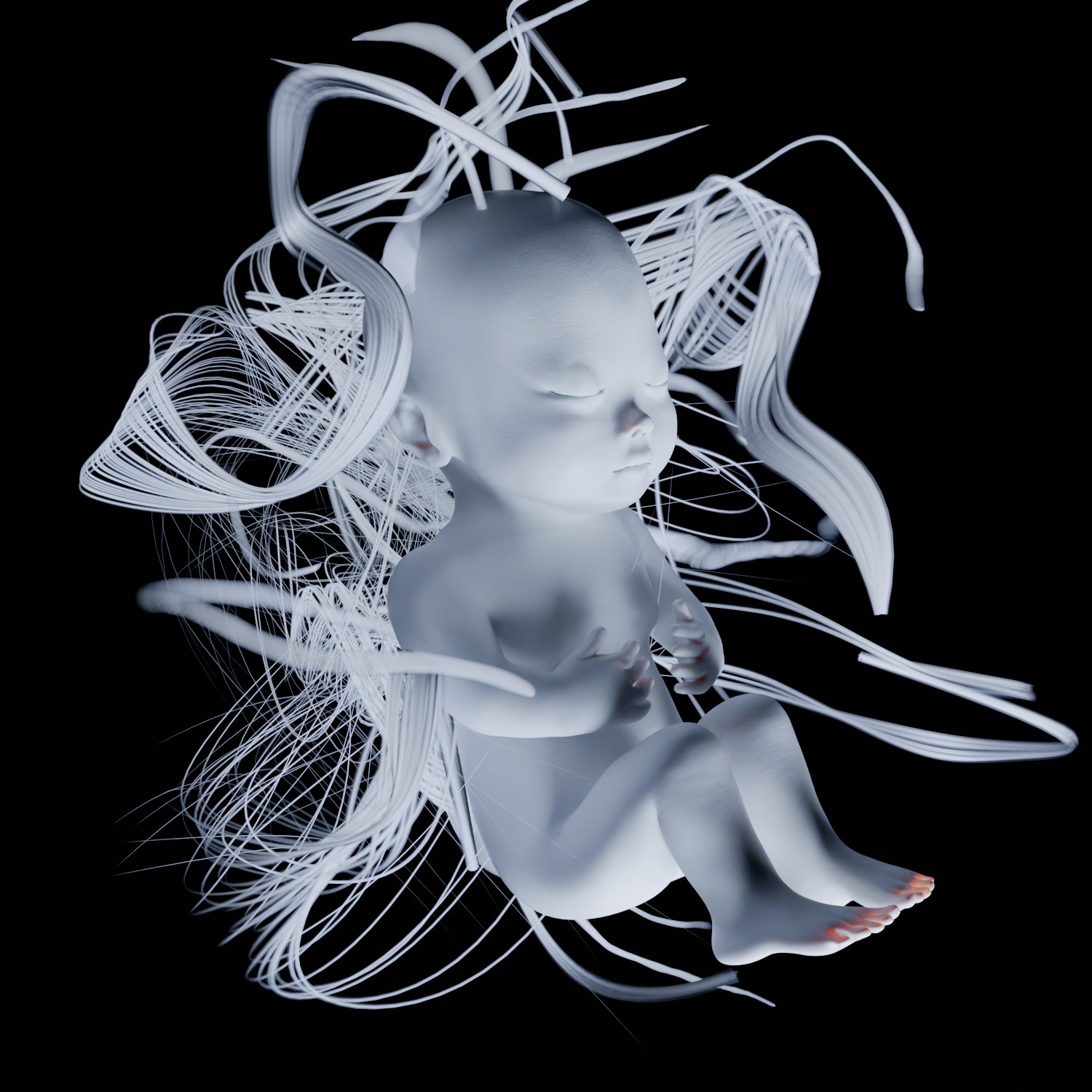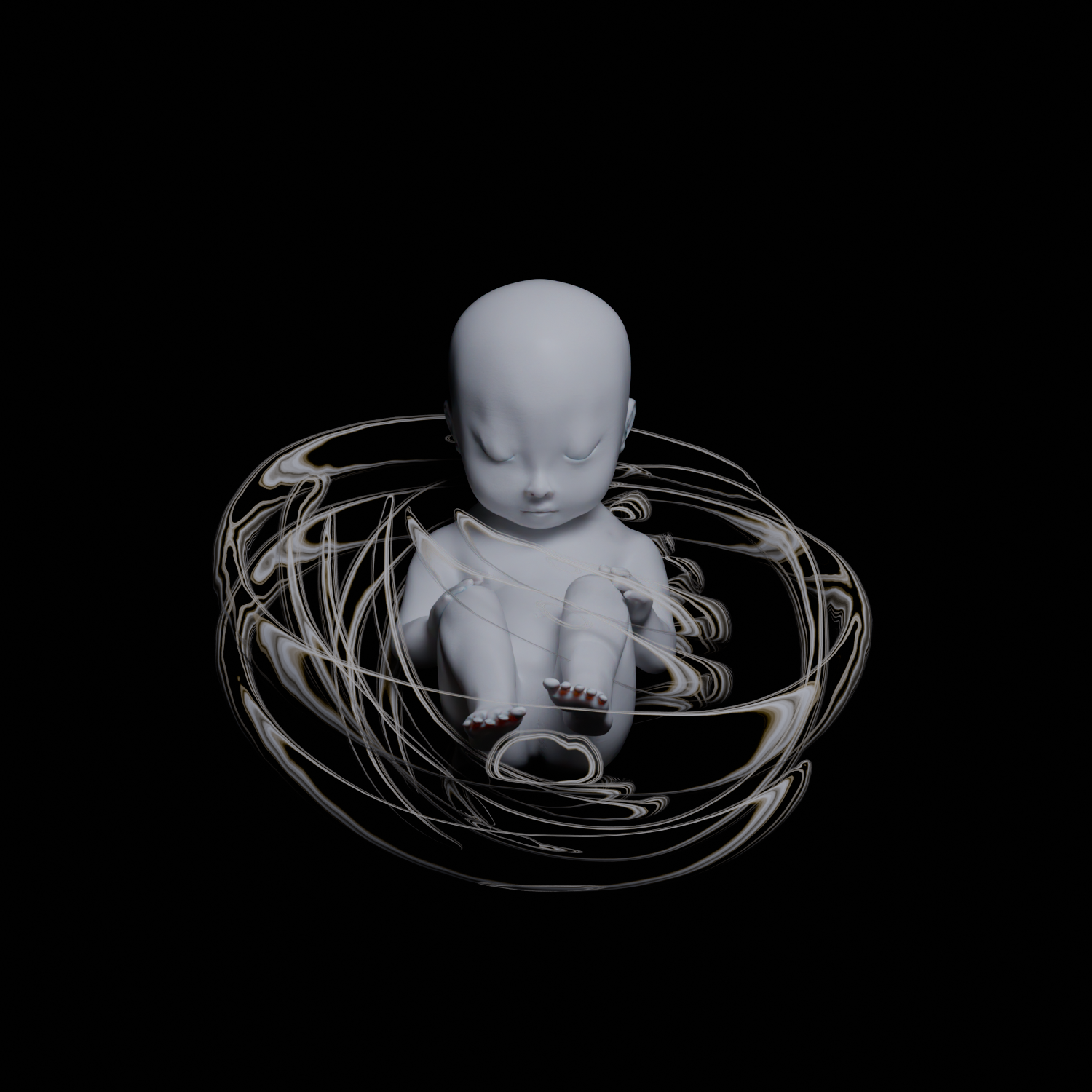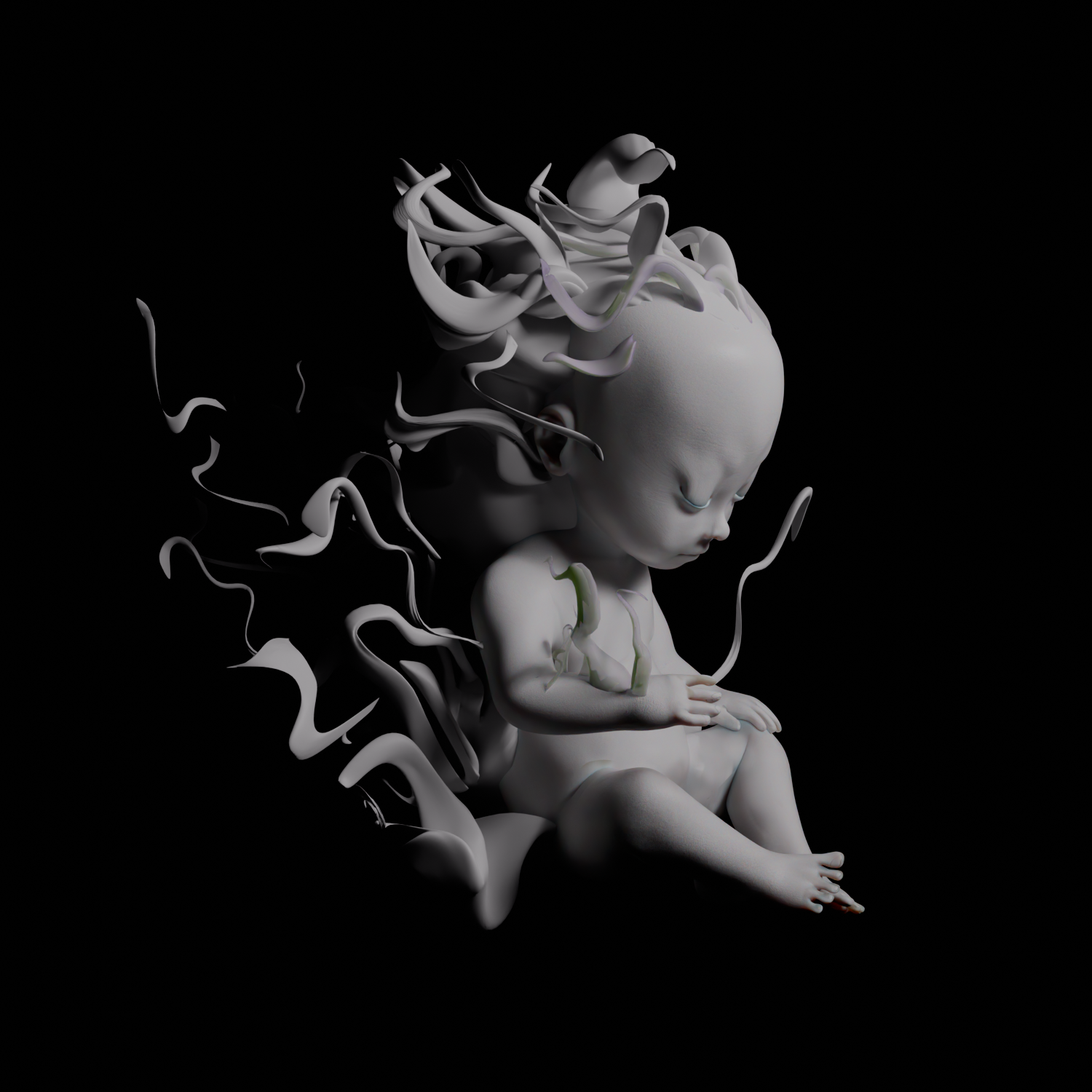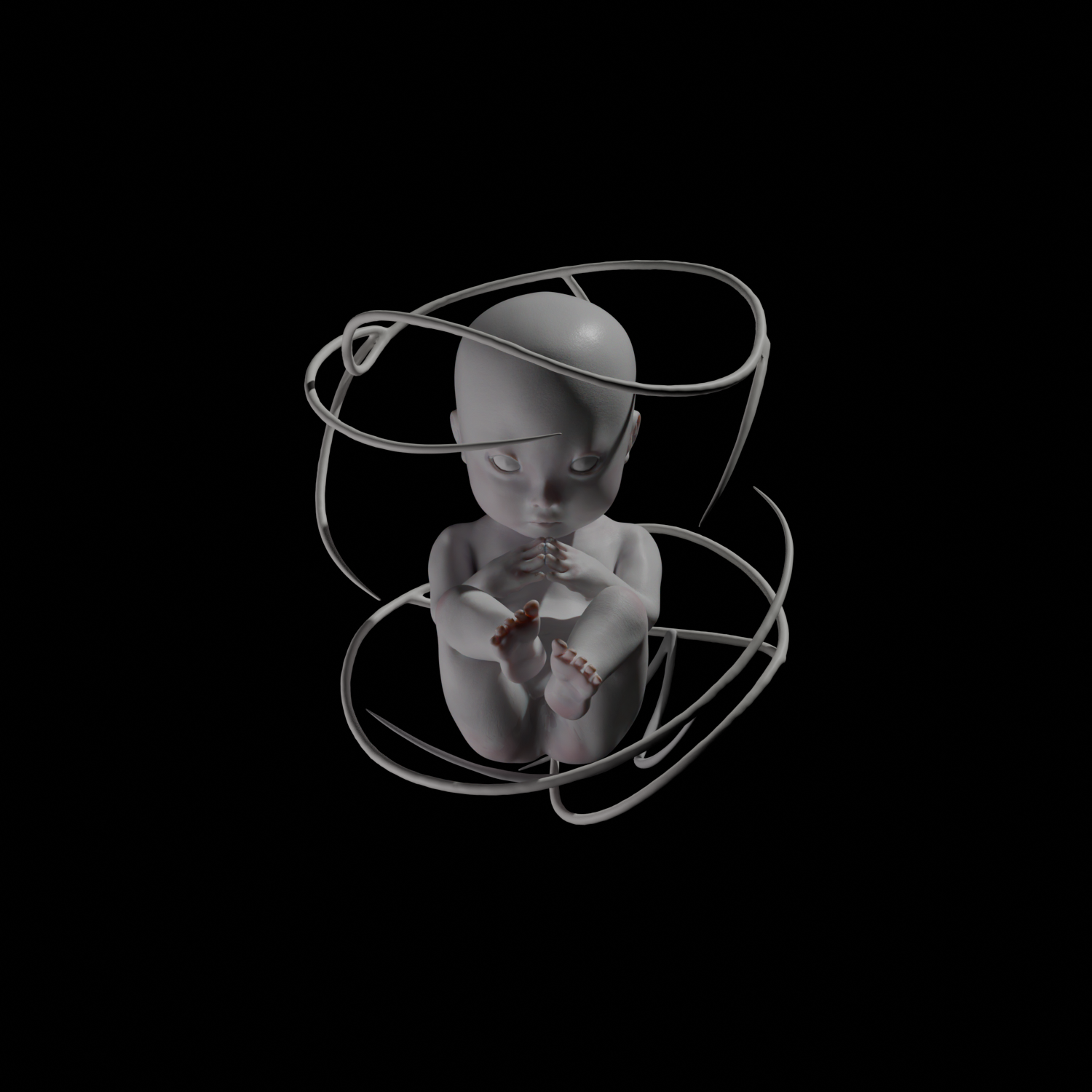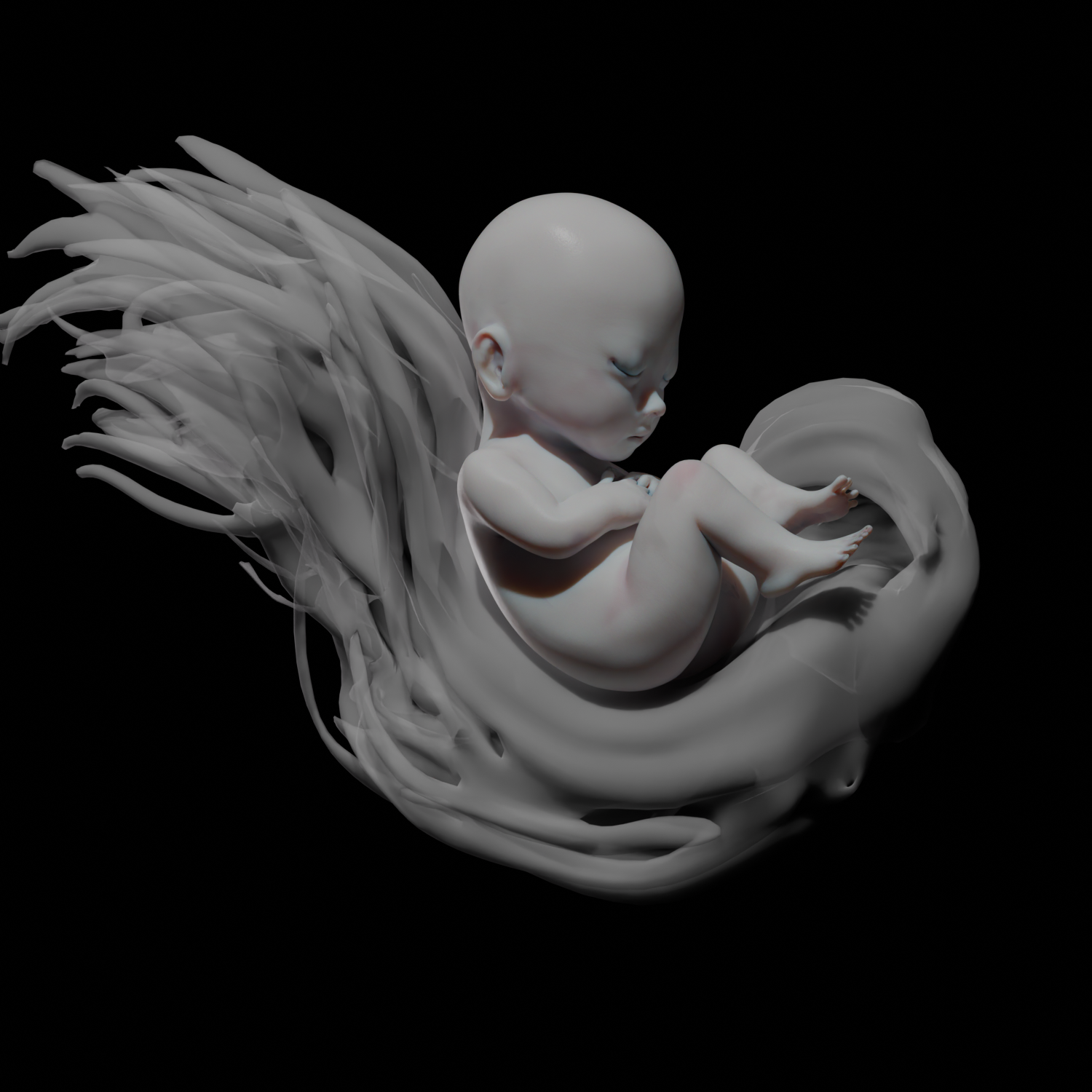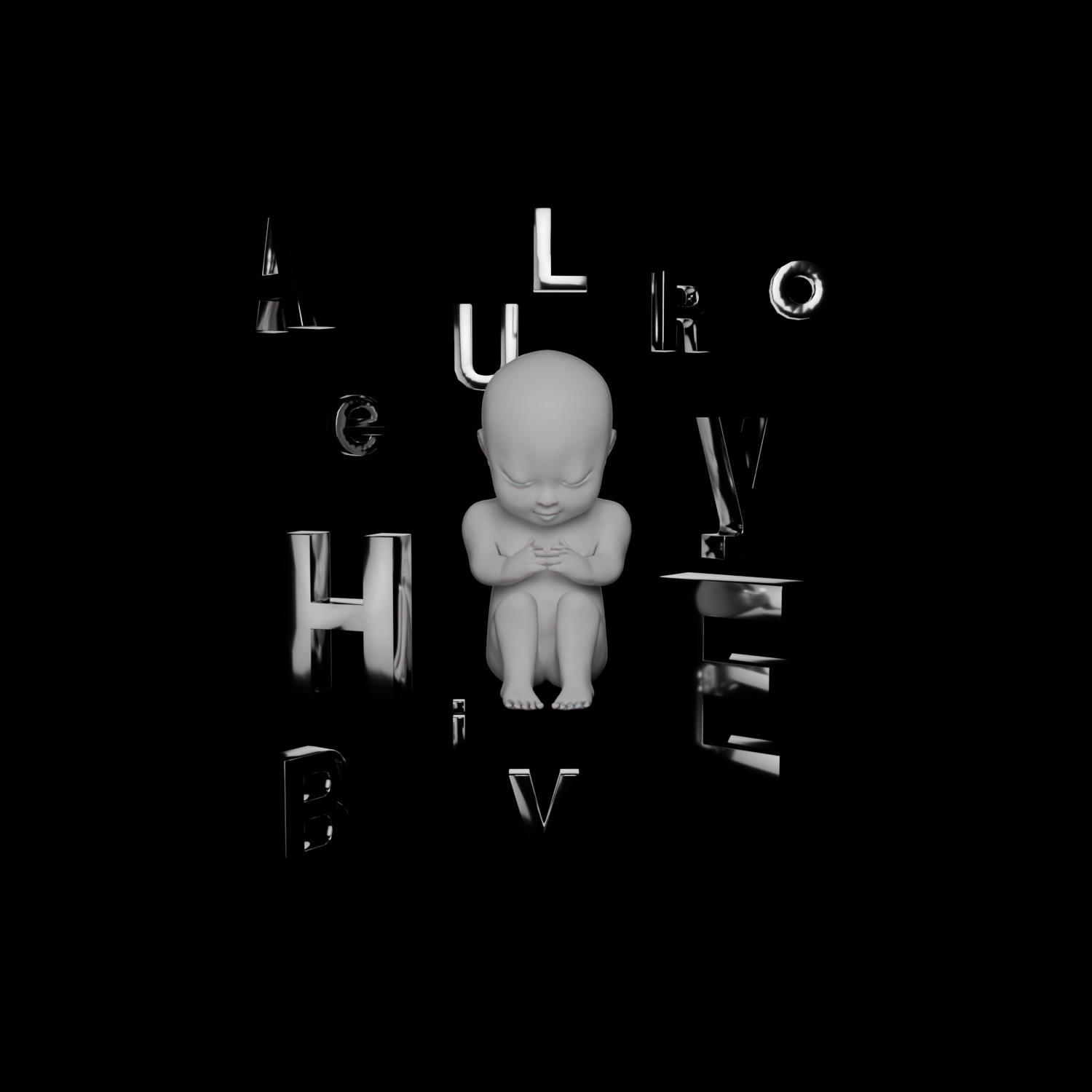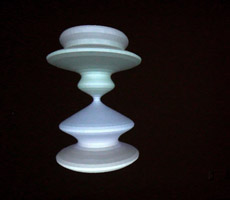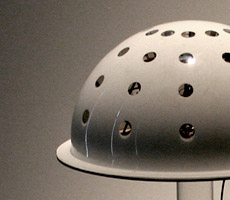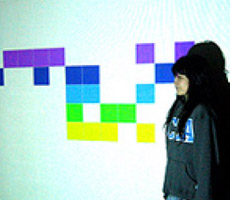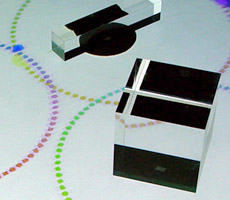Dreaming Babies
Project Description / 작품 설명
The major difference between humans and machines is that humans can self-replicate (create life). Machines cannot replicate themselves. However, with the advancement of modern science and technology, humans are developing technologies for the birth of more perfect and healthy superhumans through genetic manipulation. This topic has sparked significant controversy in both the scientific community and society due to ethical issues. Genetic modification is a technology that changes the characteristics of living organisms by inserting, deleting, or altering specific genes. This technology is being researched with the aim of treating human diseases, preventing genetic disorders, and enhancing human abilities. However, selecting traits such as appearance, intelligence, and personality through genetic modification—known as designer babies—has triggered major ethical debates and could exacerbate social inequality. For example, Chinese scientist He Jiankui announced the birth of twin babies with HIV resistance using CRISPR-Cas9 technology, an event that caused worldwide controversy and led to his legal punishment. The author experienced the process of egg retrieval and Preimplantation Genetic Testing (PGT), selecting embryos based on genetic tests, freezing only those that passed, and discarding those that did not. What defines an embryo with "normal" genes, and should those with "abnormal" genes be discarded? Currently, many human embryos that do not pass PGT testing are not brought to birth and are discarded worldwide. Are these embryos that do not pass the PGT test effectively babies that were never born? Humanity today, in the quest to produce a perfect baby, may become the last generation that fails to give birth by waiting too long for perfection. The imperfect babies deemed unworthy could represent the final generation of discarded humanity. How will babies created from embryos that passed genetic testing differ from previous generations?
This interactive artwork allows the audience members to explore 23 speculative babie designs created by human-AI collaboration and explore how human birth, death, and rebirth occur within the PGT process and how embryos filtered or passed the test develop into certain forms of babies. What happens when issues occur with one of the 23 chromosomes, leading to corresponding defects, or when a chromosome evolves too perfectly, resulting in a super-powered baby? To survive in the future society, the ideal human might look and be shaped differently than we currently imagine. Paradoxically, the most perfect baby could appear as an oddly mutated baby, while the imperfect babies may look more like what we envision as a normal baby. In this artwork, each speculative baby possesses a unique superpower and an ethereal, mysterious appearance, depicted in a dreamlike state. They appear to be in sleep mode, envisioning their extraordinary potential, which is represented by the surrounding objects. Audience members can explore AI-generated narratives, which detail the possible functions and diseases linked to each chromosome. Through this, they can uncover the connections between visual elements, speculative storytelling, and genetic information. By exploring the speculative human designs presented in this artwork, viewers can reflect on the various possibilities of human birth, future methods of genetic modification, ethical dilemmas, and the relationship between future humans, nature, and the environment.
인간과 기계의 큰 차이점은, 인간은 자기 복제 (생명 창조)를 할 수 있다는 것이다. 기계는 자기 복제를 하지 못한다. 하지만 현대 과학 기술의 발전으로 인해 인간은 자신이 원하는 유전자 조작을 통해 보다 완벽하고 건강한 수퍼 인간 생명의 탄생을 위한 기술 개발을 진행하고 있다. 이는 윤리적 문제 등 때문에 과학계와 사회에서 많은 논란을 불러일으키는 주제이다. 유전자 조작은 특정 유전자를 삽입, 삭제 또는 수정하여 생명체의 특성을 변화시키는 기술이다. 이 기술은 인간의 질병 치료, 유전병 예방, 그리고 인간의 능력 향상 등의 목적을 가지고 연구되고 있다. 하지만, 디자이너 베이비라 불리우는 유전자 조작을 통해 외모, 지능, 성격 등을 선택하는 것은 큰 윤리적 논란을 일으키고 있고 사회적 불평등을 심화 시킬 수 있다. 일례로 중국의 과학자 허젠쿠이는 CRISPR-Cas9기술을 사용하여 HIV 저항성을 가진 쌍둥이 아기를 탄생시켰다고 발표했다. 이 사건은 전 세계적으로 큰 논란을 일으켰고, 허젠쿠이는 결국 법적 처벌을 받았다. 작가는 난자 채취 및 Preimplantation Genetic Testing (PGT)을 경험한 후 배아를 유전자 테스트로 골라 내어 추출하고 정상통과 배아만 냉동을 하고 통과하지 못한 배아는 폐기하는 경험을 하였다. 과연 정상적인 유전자를 갖고 있는 배아는 무엇이며 비정상적인 유전자를 갖고 있는 배아는 버려져야 하는 걸까. 시험관 과정에서 PGT 테스트를 통과하지 못한 인간 배아는 지금도 전세계에서 임신과 출산까지 도달하지 못하고 수없이 버려지고 있다. PGT테스트를 통과하지 못한 배아는 결국 태어나지 못했던 아기인 것일까? 현재의 인류는 살아남기 위해서 너무나도 완벽한 아기를 낳기 위해서 결국 기다리다가 낳지 못하는 마지막 세대의 인류가 될지도 모른다. 그리고 완벽하지 않다고 생각하는 아기들은 너무나도 많이 버려버리는 마지막 인류일 수도 있다. 그리고 완벽하게 만들어진 배아와 유전자 테스트를 거친 아기는 어떻게 그 전 인류와 다를까?
본 작품은 PGT테스트에서 사용되는 23개의 염색체 (chromosomes)의 특성과 데이터를 인공지능 알고리즘과 3D Modeling & Animation으로 시각화하여 만들어낸 23개의 Hybrid 인간 외래종 디자인을 보여준다. 인간의 탄생, 죽음, 그리고 재탄생이 PGT라는 테스트 안에서 이루어지고 테스트에서 걸러지거나 패스한 배아가 어떤 형태의 아기로 만들어지는지에 대해 인공지능과 함께 결합하여 이미지를 모델링한다. 23개의 염색체에 문제가 생기면 그에 걸맞는 결함이 생긴 아기가 만들어지지만 그 염색체가 오히려 지나치게 완벽하게 발전되면 어떠한 수퍼 파워의 아기가 생겨날 것인가? 미래의 사회에 살아남기 위해 우리가 원하는 인간은 조금 다른 형태와 모습의 인간일 수도 있다. 역설적으로 너무나도 완벽한 아기는 이상하게 생긴 Mutated baby인 모습일 수 있다. 오히려 불완전한 아기들은 우리가 상상하는 아기의 모습을 하고 있을 수도 있다. 관람객은 본 작품에서 보여지는 새로운 스페큘레이티브 (Speculative) 인간 디자인을 탐구해 봄으로서 앞으로의 인간 탄생에 대한 많은 가능성과 미래의 인간 유전자 수정 방법과 윤리적 문제 등에 대해 고민해보고 나아가 미래의 인간, 자연, 환경의 관계성에 대해서도 모색해볼 수 있을 것이다.
The major difference between humans and machines is that humans can self-replicate (create life). Machines cannot replicate themselves. However, with the advancement of modern science and technology, humans are developing technologies for the birth of more perfect and healthy superhumans through genetic manipulation. This topic has sparked significant controversy in both the scientific community and society due to ethical issues. Genetic modification is a technology that changes the characteristics of living organisms by inserting, deleting, or altering specific genes. This technology is being researched with the aim of treating human diseases, preventing genetic disorders, and enhancing human abilities. However, selecting traits such as appearance, intelligence, and personality through genetic modification—known as designer babies—has triggered major ethical debates and could exacerbate social inequality. For example, Chinese scientist He Jiankui announced the birth of twin babies with HIV resistance using CRISPR-Cas9 technology, an event that caused worldwide controversy and led to his legal punishment. The author experienced the process of egg retrieval and Preimplantation Genetic Testing (PGT), selecting embryos based on genetic tests, freezing only those that passed, and discarding those that did not. What defines an embryo with "normal" genes, and should those with "abnormal" genes be discarded? Currently, many human embryos that do not pass PGT testing are not brought to birth and are discarded worldwide. Are these embryos that do not pass the PGT test effectively babies that were never born? Humanity today, in the quest to produce a perfect baby, may become the last generation that fails to give birth by waiting too long for perfection. The imperfect babies deemed unworthy could represent the final generation of discarded humanity. How will babies created from embryos that passed genetic testing differ from previous generations?
This interactive artwork allows the audience members to explore 23 speculative babie designs created by human-AI collaboration and explore how human birth, death, and rebirth occur within the PGT process and how embryos filtered or passed the test develop into certain forms of babies. What happens when issues occur with one of the 23 chromosomes, leading to corresponding defects, or when a chromosome evolves too perfectly, resulting in a super-powered baby? To survive in the future society, the ideal human might look and be shaped differently than we currently imagine. Paradoxically, the most perfect baby could appear as an oddly mutated baby, while the imperfect babies may look more like what we envision as a normal baby. In this artwork, each speculative baby possesses a unique superpower and an ethereal, mysterious appearance, depicted in a dreamlike state. They appear to be in sleep mode, envisioning their extraordinary potential, which is represented by the surrounding objects. Audience members can explore AI-generated narratives, which detail the possible functions and diseases linked to each chromosome. Through this, they can uncover the connections between visual elements, speculative storytelling, and genetic information. By exploring the speculative human designs presented in this artwork, viewers can reflect on the various possibilities of human birth, future methods of genetic modification, ethical dilemmas, and the relationship between future humans, nature, and the environment.
인간과 기계의 큰 차이점은, 인간은 자기 복제 (생명 창조)를 할 수 있다는 것이다. 기계는 자기 복제를 하지 못한다. 하지만 현대 과학 기술의 발전으로 인해 인간은 자신이 원하는 유전자 조작을 통해 보다 완벽하고 건강한 수퍼 인간 생명의 탄생을 위한 기술 개발을 진행하고 있다. 이는 윤리적 문제 등 때문에 과학계와 사회에서 많은 논란을 불러일으키는 주제이다. 유전자 조작은 특정 유전자를 삽입, 삭제 또는 수정하여 생명체의 특성을 변화시키는 기술이다. 이 기술은 인간의 질병 치료, 유전병 예방, 그리고 인간의 능력 향상 등의 목적을 가지고 연구되고 있다. 하지만, 디자이너 베이비라 불리우는 유전자 조작을 통해 외모, 지능, 성격 등을 선택하는 것은 큰 윤리적 논란을 일으키고 있고 사회적 불평등을 심화 시킬 수 있다. 일례로 중국의 과학자 허젠쿠이는 CRISPR-Cas9기술을 사용하여 HIV 저항성을 가진 쌍둥이 아기를 탄생시켰다고 발표했다. 이 사건은 전 세계적으로 큰 논란을 일으켰고, 허젠쿠이는 결국 법적 처벌을 받았다. 작가는 난자 채취 및 Preimplantation Genetic Testing (PGT)을 경험한 후 배아를 유전자 테스트로 골라 내어 추출하고 정상통과 배아만 냉동을 하고 통과하지 못한 배아는 폐기하는 경험을 하였다. 과연 정상적인 유전자를 갖고 있는 배아는 무엇이며 비정상적인 유전자를 갖고 있는 배아는 버려져야 하는 걸까. 시험관 과정에서 PGT 테스트를 통과하지 못한 인간 배아는 지금도 전세계에서 임신과 출산까지 도달하지 못하고 수없이 버려지고 있다. PGT테스트를 통과하지 못한 배아는 결국 태어나지 못했던 아기인 것일까? 현재의 인류는 살아남기 위해서 너무나도 완벽한 아기를 낳기 위해서 결국 기다리다가 낳지 못하는 마지막 세대의 인류가 될지도 모른다. 그리고 완벽하지 않다고 생각하는 아기들은 너무나도 많이 버려버리는 마지막 인류일 수도 있다. 그리고 완벽하게 만들어진 배아와 유전자 테스트를 거친 아기는 어떻게 그 전 인류와 다를까?
본 작품은 PGT테스트에서 사용되는 23개의 염색체 (chromosomes)의 특성과 데이터를 인공지능 알고리즘과 3D Modeling & Animation으로 시각화하여 만들어낸 23개의 Hybrid 인간 외래종 디자인을 보여준다. 인간의 탄생, 죽음, 그리고 재탄생이 PGT라는 테스트 안에서 이루어지고 테스트에서 걸러지거나 패스한 배아가 어떤 형태의 아기로 만들어지는지에 대해 인공지능과 함께 결합하여 이미지를 모델링한다. 23개의 염색체에 문제가 생기면 그에 걸맞는 결함이 생긴 아기가 만들어지지만 그 염색체가 오히려 지나치게 완벽하게 발전되면 어떠한 수퍼 파워의 아기가 생겨날 것인가? 미래의 사회에 살아남기 위해 우리가 원하는 인간은 조금 다른 형태와 모습의 인간일 수도 있다. 역설적으로 너무나도 완벽한 아기는 이상하게 생긴 Mutated baby인 모습일 수 있다. 오히려 불완전한 아기들은 우리가 상상하는 아기의 모습을 하고 있을 수도 있다. 관람객은 본 작품에서 보여지는 새로운 스페큘레이티브 (Speculative) 인간 디자인을 탐구해 봄으로서 앞으로의 인간 탄생에 대한 많은 가능성과 미래의 인간 유전자 수정 방법과 윤리적 문제 등에 대해 고민해보고 나아가 미래의 인간, 자연, 환경의 관계성에 대해서도 모색해볼 수 있을 것이다.

